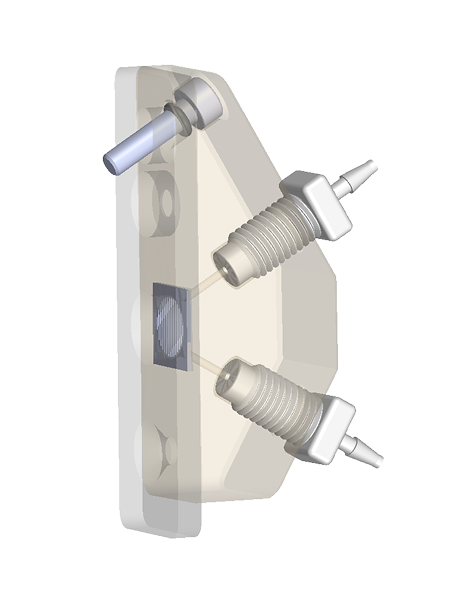Technology
We make bioprocess analytics faster and smarter.
Parallel measurement of CQAs by mid-infrared spectroscopy
High robustness through polarization stabilized spectroscopy
The fundamental principles of spectroscopy are rooted in molecular absorption, where molecules absorb energy at distinct wavelengths. The quantitative analysis confirms the proportionality between absorption intensity and concentration as well as the relationship between the unique absorption profiles and differentiation of molecular structures. This direct method provides measurements without intermediaries, allowing for enhanced control over dynamic bioprocesses.
Our speciality, polarization stabilized spectroscopy, enables background correction by using background measurements that correct the spectra for changes in the instrument or the environment. As a result, Monipa evades problems with absorption from water vapor.

Single-use flow cell
- Reduced contamination risk
- Minimal sample preparation required
- Real-time, inline measurement capabilities
An ATR crystal is a key component in infrared spectroscopy and the refractive index is an essential factor in selecting an ATR crystal. Only materials with a high refractive index, like diamond or zinc selenide, can be used. However, these materials are costly and not ideal for single-use applications, such as bioprocess monitoring. IRUBIS’ ATR crystal is based on silicon, a widely available material used in semiconductor manufacturing. It enables the production of large quantities of ATR crystals, resulting in lower costs. This makes our ATR crystals an ideal choice for single-use applications.